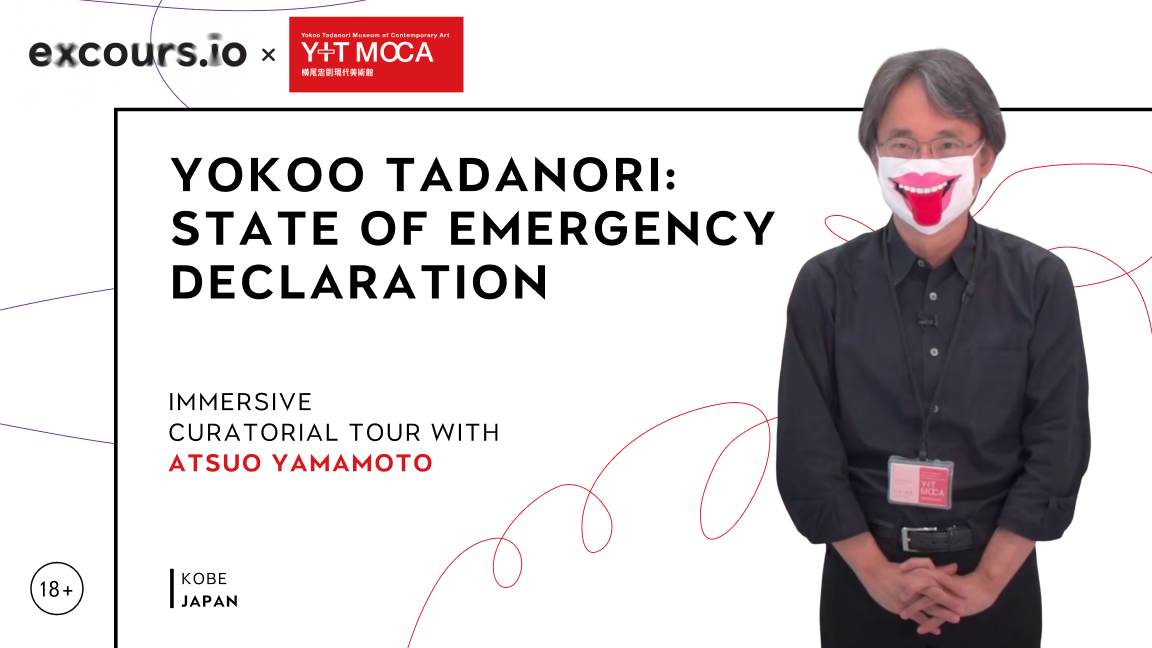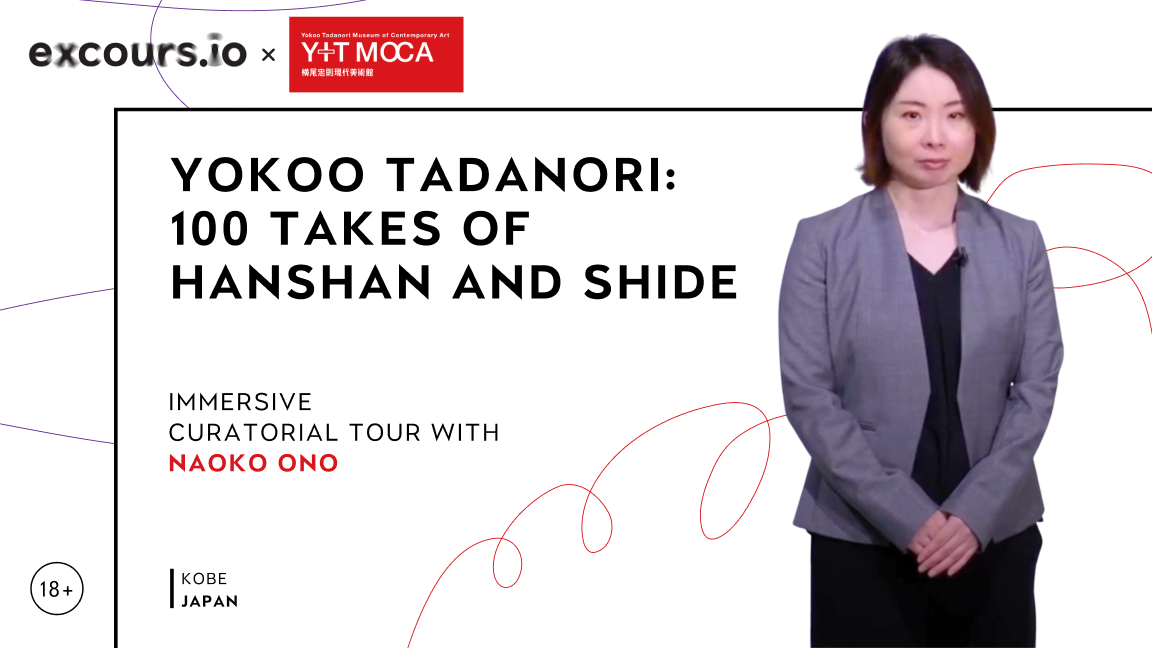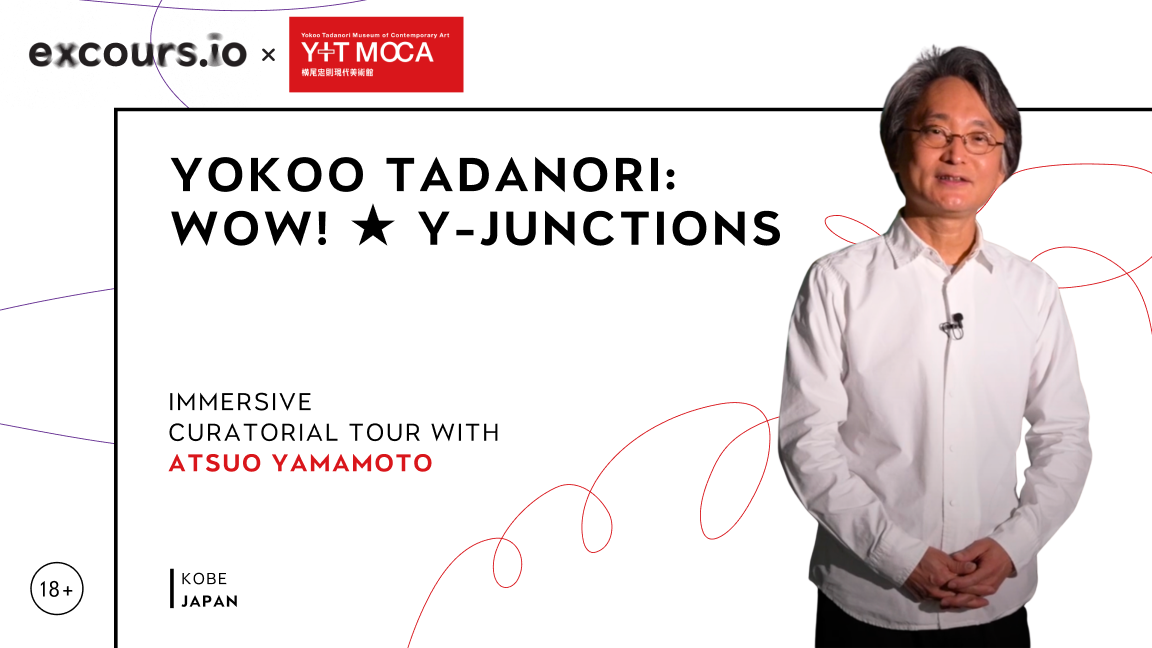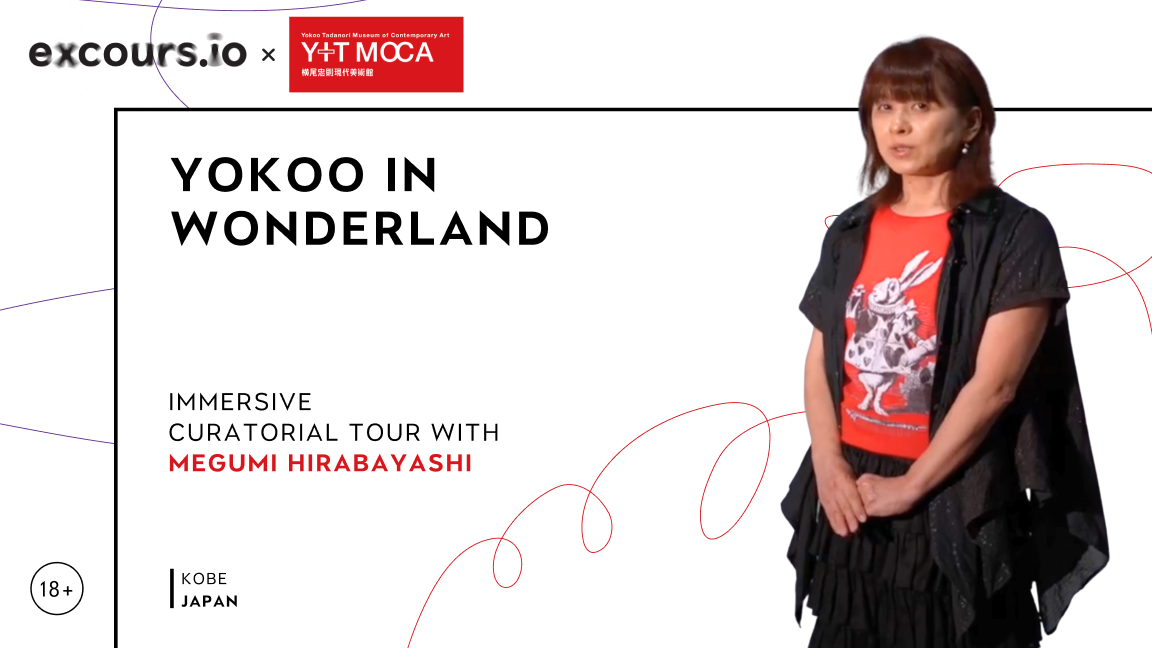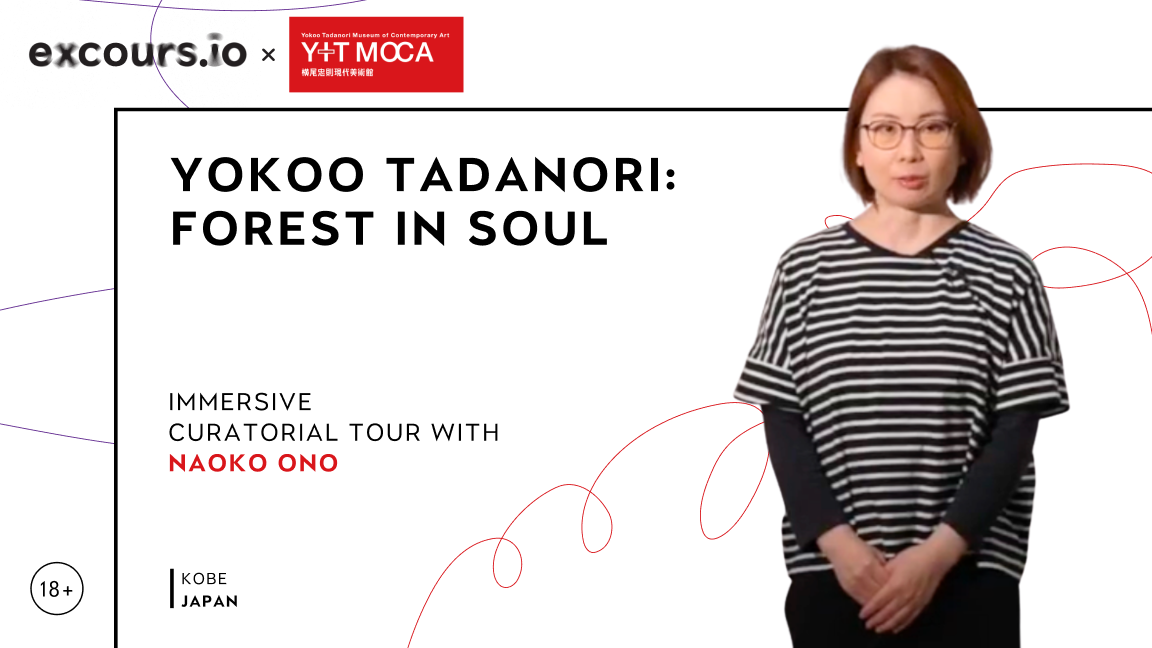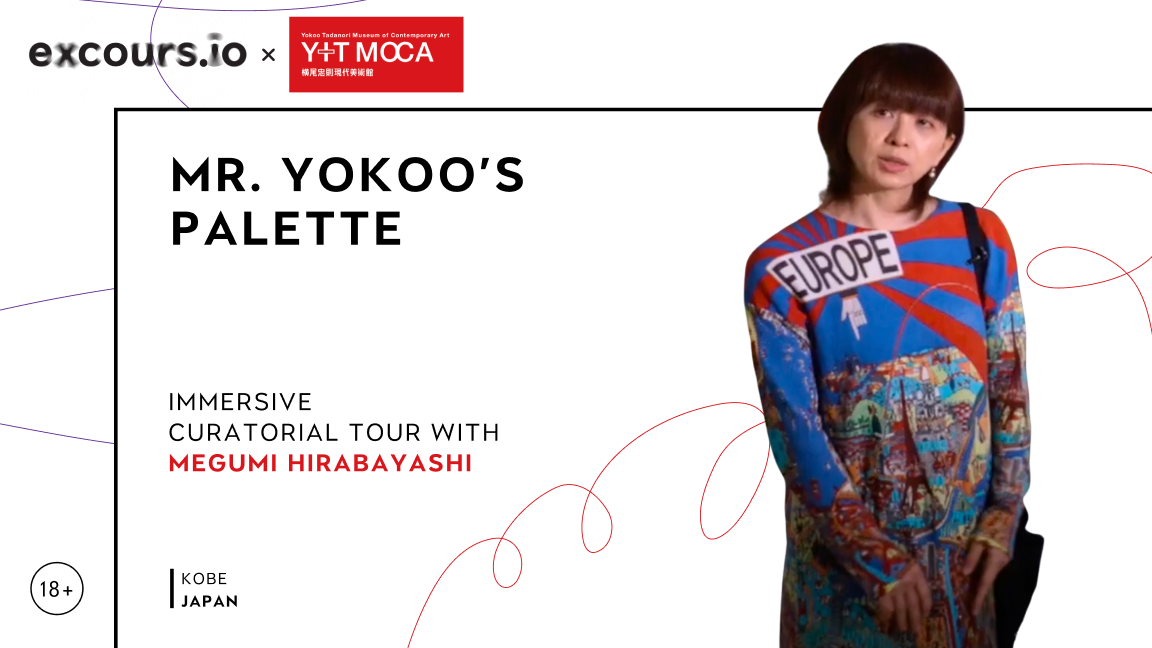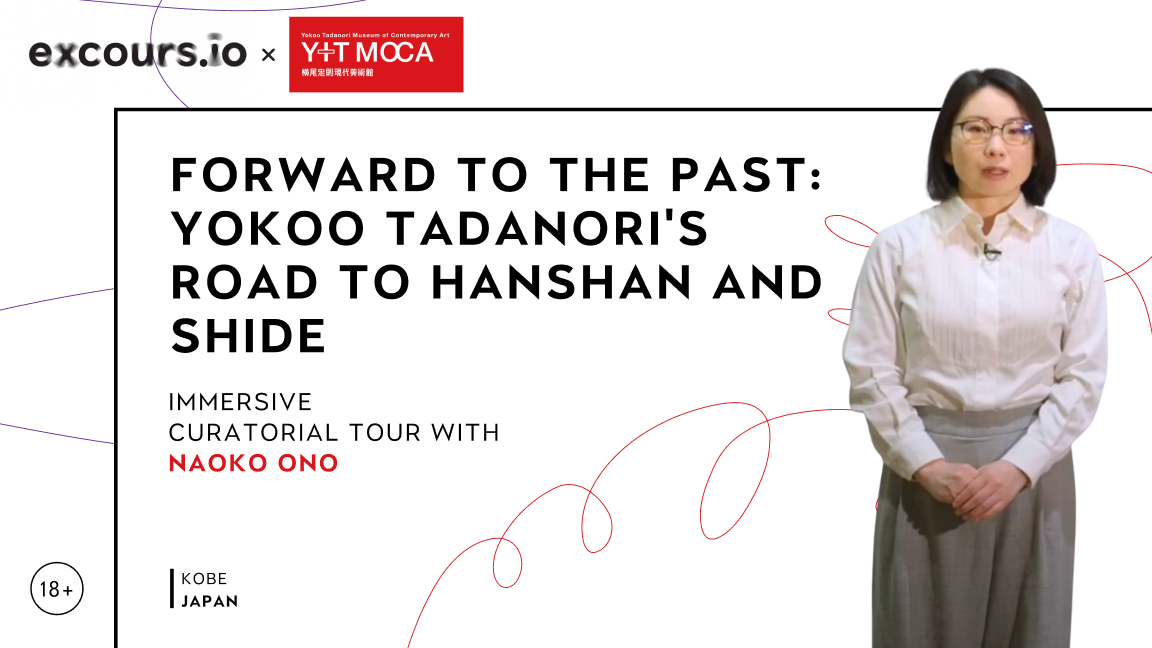Yokoo Tadanori: State of Emergency Declaration
Yokoo Tadanori: State of Emergency Declaration explores the artist’s prescient depictions of tense situations where the line between fact and fiction dissolves. Long before the novel coronavirus crisis, Yokoo Tadanori repeatedly created works that now resonate with contemporary global events, reflecting a timeless human experience of uncertainty. This exhibition features his impactful paintings alongside an installation of his recent online series, With Corona, which incorporates imagery like masks in a direct artistic response to the virus. Visitors can observe how Yokoo’s vision, spanning from earlier works to current creations, challenges perceptions of reality, encouraging reflection on art’s power to interpret and shape our understanding of the world during moments of profound change.
Why should you watch this?
The film State of Emergency Declaration resonates now because it captures the unsettling feeling of living through crises that blur the edges of truth and imagination. Long before the pandemic, Yokoo Tadanori painted scenes where reality fractured under pressure, and his recent With Corona collages — filled with masks and cavernous mouths — extend that vision into our present. Confronting these images can be disquieting, even surreal, yet they also sharpen awareness of how art can mirror collective anxiety while offering a space to process it. The takeaway is stark yet universal: in uncertain times, art helps us face fear and reimagine survival.
Yokoo Tadanori’s Game of Life
Yokoo Tadanori’s Game of Life transforms the artist’s remarkable journey into an interactive board game, inviting visitors to experience his extensive artistic world firsthand. Born in 1936, Yokoo Tadanori has navigated a career spanning decades, marked by a philosophy that embraces destiny and chance. The exhibition explores how his art reflects life’s unpredictable path, where outcomes are often left to fate, much like reaching the “Finish” square in a game. Through this engaging format, featuring the visionary artist’s work, the exhibition encourages reflection on the interplay of choice and fortune in shaping creative expression and individual trajectories. Visitors will gain a fresh perspective on his unique artistic vision and the unpredictable nature of life itself.
Why should you watch this?
The film Yokoo Tadanori’s Game of Life feels urgent now because it frames existence as both play and chance, echoing the uncertainty of our own times. Yokoo’s use of the board game format highlights how life’s path is shaped as much by accident as by intention, a theme that resonates in an era of shifting global realities. Moving between moments of triumph, setback, and surprise, the exhibition transforms autobiography into a shared reflection on fate. The playful roll of the dice becomes a metaphor for resilience, leaving viewers with a reminder that unpredictability is not chaos but a condition of living.
Requiem: Cats, Portraits, and Yokoo Tadanori
Requiem: Cats, Portraits explores artist Yokoo Tadanori’s profound connections with departed friends, family, and beloved cats, tracing his influential career from the 1960s to the present. Born in 1936, Yokoo’s artistic journey has always been shaped by deep personal relationships and collaborative endeavors across various creative fields. The exhibition features portraits and personal statements, alongside items like the Tama, Come Home series, dedicated to his late cat. Visitors will also see examples of his enduring friendship with designer Issey Miyake, including iconic invitation designs from the 1970s onwards. This unique presentation invites viewers to reflect on how cherished relationships transcend time, influencing an artist’s vision and offering a glimpse into a timeless “Yokoo World.”
Why should you watch this?
The film Requiem: Cats, Portraits speaks to the need to keep memories alive in a time when loss touches many lives. Yokoo Tadanori’s portraits of friends, family, and his late cat Tama are not only records of affection but also reminders of how relationships shape creative vision. The display of Issey Miyake’s invitations alongside Yokoo’s drawings captures the energy of a friendship that spanned decades, showing how personal ties can fuel artistic innovation. Moving between private recollection and shared cultural history, the work invites viewers to consider how love, grief, and memory continue to shape the world we inhabit.
Yokoo Tadanori: 100 Takes of Hanshan and Shide
100 Takes of Hanshan and Shide presents artist Yokoo Tadanori’s series of 102 paintings, reinterpreting figures from China’s Tang dynasty. Hanshan and Shide, eccentric poets believed to be bodhisattvas, have inspired artists for centuries with their enduring mystery. Yokoo found them an ideal image, projecting them onto diverse scenes like ukiyo-e-style women and marathon runners, a quest begun with his interpretation of Soga Shohaku. This exhibition reveals Yokoo’s sustained creative power after forty years, connecting ancient legends with contemporary art. Visitors will reflect on the timeless interplay between myth and artistic vision, appreciating how one artist continually reshapes enduring narratives.
Why should you watch this?
The film 100 Takes of Hanshan and Shide speaks to our moment by showing how myth and misrule become tools for thinking about continuity and change. Yokoo’s decision to paint 102 versions — placing ragged, poetic figures beside ukiyo-e women, Belorussian lovers, and marathon runners — stretches time and tests who belongs in stories we keep. Some images shock: Hanshan laughing in garish color or Shide pacing through a crowd of runners; others disarm with tenderness. The work feels at once playful and provocative, inviting viewers to reconsider tradition as a living practice and to carry forward compassion and imagination into uncertain futures.
Yokoo Tadanori: Wow! ★ Y-Junctions
Wow! ★ Y-Junctions presents Yokoo Tadanori’s extensive and evolving series, initiated in 2000, which transforms familiar three-way road junctions into profound artistic landscapes. This ambitious project began when Yokoo photographed a night scene in his hometown, revealing unexpected depths in everyday scenery. What started as an introspective world of light and shadow evolved through phases of explosive color, continuously generating new variations. The exhibition highlights this ongoing artistic exploration, featuring works from the series’ early years (2000-2005) and more recent creations from 2016 onwards. Visitors can witness how one artist’s singular vision redefines perception, inviting reflection on the hidden beauty and endless transformations within the commonplace world around us.
Why should you watch this?
The film Wow! ★ Y-Junctions speaks to our moment because it shows how a single flash of perception can turn ordinary streets into places for renewed attention and meaning after collective disruption. Yokoo’s nocturnal photograph of a three-way junction becomes a recurring voice that shifts from penumbral stillness to explosive color, producing scenes both eerie and exhilarating: a lamplit fork that reads like a private memory and a sweep of saturated paint that reads as public joy. These moments unsettle and uplift in equal measure, and the film’s lasting takeaway is clear—close looking can change how we imagine shared life.
Yokoo in Wonderland
Yokoo in Wonderland invites visitors into artist Yokoo Tadanori’s parallel realm, where the boundaries of reality dissolve into a collection of wonders. Drawing inspiration from Lewis Carroll’s classic Alice in Wonderland, the exhibition guides viewers through a journey that begins with a girl falling into an underground kingdom, then continues into space and an unknown world. The experience progresses through “The Looking-Glass World,” where real and virtual images intertwine, and concludes in “The Land of Dreams,” blurring reality and unreality. Through Yokoo’s distinctive artistic vision, this exhibition encourages a deep immersion into an infinitely expanding universe, prompting reflection on how art can transport and reshape our perception of the world.
Why should you watch this?
Yokoo Tadanori: Forest in Soul
Yokoo Tadanori: Forest in Soul brings to life the artist’s 2022 novel, Genkyo no mori, transforming its narrative into an immersive exhibition. Yokoo Tadanori, a renowned painter and writer, explores art and life through conversations with 280 departed souls. These figures, from celebrated artists like Pablo Picasso and Marcel Duchamp to personal acquaintances and his beloved cat Tama, profoundly shaped Yokoo’s artistic vision throughout his career. The exhibition’s forest-like setting visually embodies these dialogues, inviting visitors to wander through Yokoo’s imagined world. Guests will discover how timeless influences from diverse realms can inspire creativity, prompting reflection on the enduring connections between existence, artistry, and memory.
Why should you watch this?
Mr. Yokoo’s Palette
Mr. Yokoo’s Palette showcases artist Yokoo Tadanori’s striking use of color, tracing his vibrant painting career since his “painter’s declaration” in the early 1980s. This pivotal moment marked his shift from graphic design to a prolific period of pictorial experiments, creating diverse works without fixed subjects or styles. The exhibition uniquely reorganizes his artistic world by categorizing paintings from series like Pink Girl and Y-junction based on their dominant hues, transforming the museum galleries into a grand palette. Visitors will discover background materials, including actual used palettes and paints from his studio, offering a glimpse into his creative process. This presentation invites reflection on the overwhelming power of Yokoo’s colors and how a singular artistic element can define an entire body of work, offering a fresh perspective on his timeless vision.
Why should you watch this?
Forward to the Past: Yokoo Tadanori’s Road to Hanshan and Shide
The exhibition Forward to the Past: Yokoo Tadanori’s Road to Hanshan and Shide presents artist Yokoo Tadanori’s compelling new paintings, inspired by the Tang-dynasty (618-907 CE) Zen monks Hanshan and Shide, alongside key works from his extensive artistic journey. Responding to the profound global shifts beginning in 2020, Yokoo retreated to his studio, developing his “moro-tai” (obscure style) to portray Hanshan and Shide, celebrated for their tousled hair, ragged clothes, and hearty laughter. This collection reveals how an artist’s personal introspection during times of societal change can lead to an unexpected connection with historical figures and artistic renewal, inviting visitors to consider the enduring power of creative resilience across ages.

